The chair is perfect for milking cows. It might seem that it was cre-ated with that in mind, or actually, even better, designed, to just sit down and relax. A chair helpful in the years of a happy childhood to stand on and take out the candy hidden by Mom on the top shelf in the kitchen cupboard. A chair perfect for the execution of Rudolf Hoess, the comman-dant of the Auschwitz-Birkenau camp, sentenced to death by hanging. A chair suitable for meditation and reflection on how to lie to a neigh-bor or a wife, for ruminating on how deep my devotion and faith are the supreme architect of all things, for standing on it to look down on fellow men. The Readymade object, which is a copy of the chair used to hang Rudolf Hoess. Is it possible to execute the sentence by hanging Rudolf Hoess using the readymade object and duplicate the entire Holocaust at the Auschwitz-Birkenau camp? And what if it is one of the many copies of the chair? The evidence indicates that the chair is real, although it is a copy (a genuine copy), and a copy does not exclude punishment. Chair, the object used to perpetrate violence (sentence), used to car-ry out the act of punishment for „hatred,” although Rudolf Hoess tre-mendously cared to make sure that everything in the concentration camp was working as it should, pursuant to the „regulations”. Rudolf Hoess’ care was hated because it caused many misfortunes and trag-edies for hundreds of thousands of victims. It is a very specifically
understood care, bestial and sick care; I care to hurt (kill) you. Is this the reason we stop sympathizing with the copy because it imitates the original? The cult of caring defeats the cult of sacrifice. Maybe you need to use an algorithm and calculate the ratio of the number of murderers who vented their „neurotic-bestial” desires during the war to the number of chairs and other furniture made on an assembly line (just like in „Ikea”) in the camp carpentry shop? Today, all complex conditions can be brought down to algorithmic measurement. What algorithm does „Hoess’ chair” have, being an algorithm itself, even if it is only a copy of the chair. It can be brought down to measure-ment with an algorithmic algorithm that controls our lives.
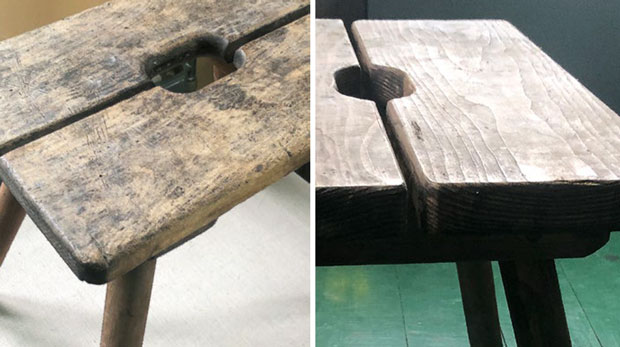
Or perhaps it is the „Allegorithm” (allegory of the al-gorithm), which assumes an infinite number of univers-es with an infinite number of our copies and chairs, and also of Rudolf Hoess. In time, it may turn out probable to become obligatory later on. When he was young, Mr. Rudolf Hoess said that he wanted to be a priest, like his father. In order for the algorithm to fulfill its function and assumptions well, the relation between people must be insincere.
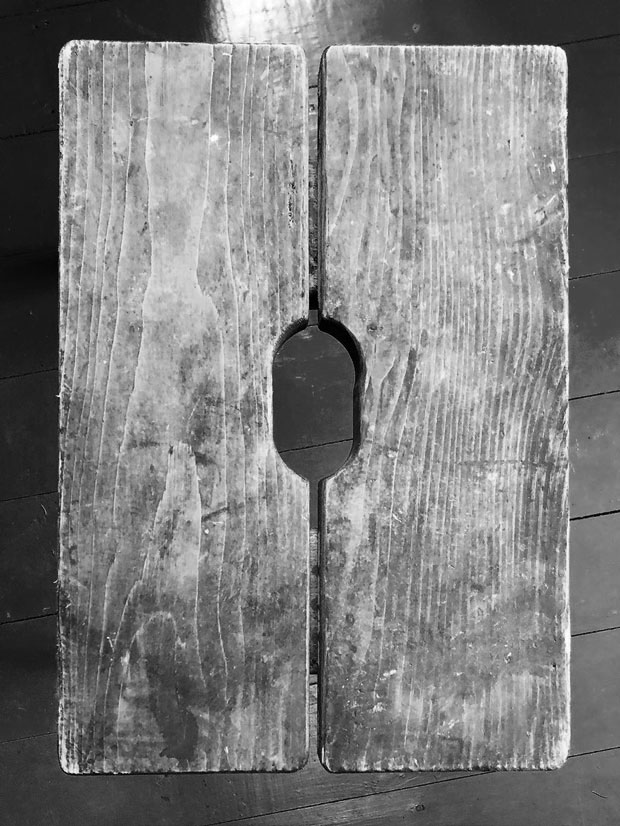
The chair that killed more than one person in the camp is heavy.
Wooden chair used successfully both inside and outside the camp; the same one was used during the execution of Rudolf Hoess, the camp carpentry. Foundation of Memory Sites Near Auschwitz-Birkenau.
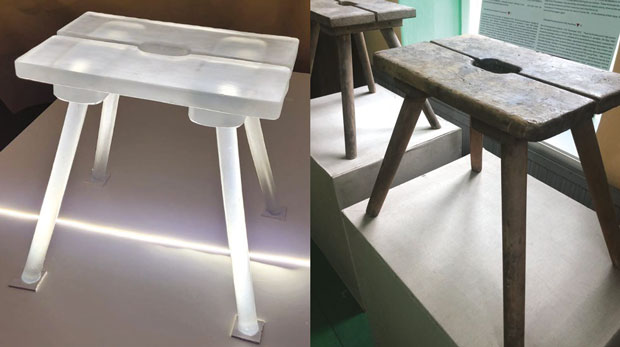
Today, all complex conditions can be brought down to algo-rithmic measurement.
Rudolf Franz Ferdinad Hoess was born in Baden-Baden in 1900. He was executed by hanging on April 16, 1947 at 10:05 a.m. Rudolf Hoess did not become a missionary, despite his father’s vows, perhaps not because the algorithm failed, but because the profession had been predeter-mined, as was the number of chairs to be produced. The copy is the original. According to Andy Warhol, all copies, so it does not matter which one was used in Rudolf Hoess’s hanging. This is a sensational solution for all the local resi-dents living near the Auschwitz-Birkenau camp who have „genuine” copies of these chairs, and each of them claims that it was their chair that was used to carry out the sentence on Rudolf Hoess. How-ever, it is also a solution for someone who has the original, if there is one at all. This means that all the chairs were first and all were placed under Rudolf Hoess’ feet. Will the copy of the execution be genuine when we copy the Holocaust, and will the Holocaust be gen-uine? The original is also a copy according to Andy Warhol, and a copy of the original Holocaust may be genuine to be repeated in a very large number of cop-ies. One can only wonder if each of them is still the original Holocaust.
Looking for authenticity, the original copy touch-es the very heart of darkness, and not the materi-al for such as, “How many people lost their lives in Auschwitz-Birkenau?”, knowing that numbers do not matter. Examining the original narrative fails as does our tradition, religion, humanism and culture and art with its algorithmic aesthetics. As in the quantum multiverse, the same rules that prevailed inside the Auschwitz-Birkenau camp seem to be reproduced along with the story that we are getting better. Meanwhile, we are secretly bidding on a new original copy of the chair to hang Rudolf Hoess for the 100th time, each time believing in the original judgment.
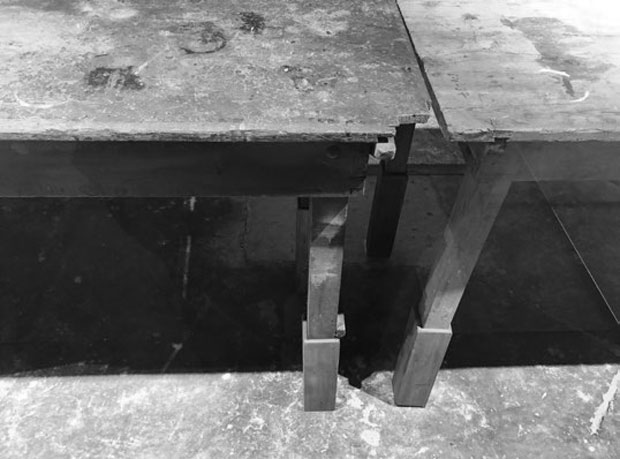
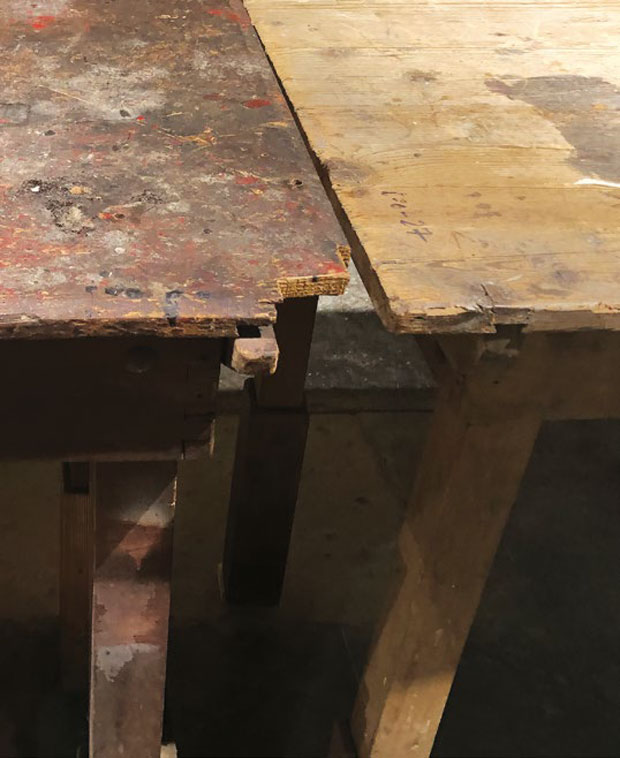
Due to the inability to comprehend what rational-ly or logically what happened in Auschwitz-Birkenau and what is happening to this day around this event, it is an attempt at getting closer, using an abstract approach, through a chair which, with its „neutrali-ty” or the lack of direct involvement or with passive participation, offers a chance to change the percep-tion of what happened in Auschwitz-Birkenau. But even an irrational way of showing the causes of the event, or any other category, such as, for in-stance, seem to be a link explaining the failure of this absurd event. Rational understanding of what happened and what we inherited from Auschwitz-Birkenau and what lasts, as a practice of memory from the point of view of a readymade art object, or through art, as the last discipline that would be able to dominate the infinite abyss of this feat, appears (HERE) as an infantile tragic banality worth no application or representation, just like Auschwitz-Birkenau, after which no other representations exist. Again about the Chair (some unnecessary and pointless questions).
Will the paradox of duplicates versus the identity of Rudolf Hoess, or a copy as a backup record, fulfill its task to recreate the original? Will no one be able to tell the replica from the original „ego” * of Rudolf Hoess? Would we notice the difference between a living Rudolf Hoess with the same memories and the consciousness that dies when the original of Ru-dolf Hoess is destroyed? In some cases, a copy is as-sociated with an error, a counterfeit. Anniversaries of the Holocaust or the liberation of the camp should be celebrated on the Feast of the Dead, or prefer-ably on Halloween, because it is my birthday. The Auschwitz-Birkenau Amusement Park works very well, after all, it is the most visited place in Poland with the largest number of visitors from all over the world.


